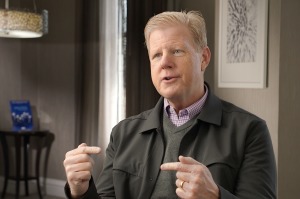Poll: Christians Most Numerous Worldwide; 'Nones' Majority in Six Countries
An international Pew Research Center's Forum on Religion & Public Life poll has found that Christianity remains the religion with the most adherents worldwide, while roughly one-third of people around the globe have no religious affiliation.
The comprehensive poll examined more than 230 countries worldwide, and asked respondents to identify which religion, if any, they belong to. The results determined that 32 percent of the world's population, 2.2 billion people, are Christians, 23 percent or 1.6 billion are Muslim, 15 percent or 1 billion are Hindu, and that 7 percent or 500 million are Buddhists. African, Asian, Native American and other folk religions are still practiced by 6 percent or 400 million people. Close to 1 percent belong to other established groups like the Baha'i faith, Jainism, Sikhism, Shintoism, Taoism, Tenrikyo, Wicca and Zoroastrianism, while Jewish people account for only 0.02 percent, or 14 million of the population.
The Pew poll found that almost half of the world's Christians are Catholic, while 37 percent identify as one of the Protestant traditions, which includes Anglicans. The Orthodox Communion numbers 12 percent, while minority denominations, sometimes referred to as "cults" like Mormons and Jehovah Witnesses only make up around 1 percent of the global Christian population.
"The 10 countries with the largest number of Christians account for about half (48 percent) of the global Christian population. The largest share of all Christians live in the United States (11 percent), followed by Brazil (8 percent), Mexico (5 percent), Russia (5 percent), the Philippines (4 percent), Nigeria (4 percent), China (3 percent), the Democratic Republic of the Congo (3 percent), Germany (3 percent) and Ethiopia (2 percent)," Pew explain.
Almost all religions were heavily concentrated in one geographical region or another – except for Christianity, which was spread almost evenly across six continents.
Hindu, Buddhists, Folk and Other religious groups were found almost exclusively concentrated in the Asia-Pacific region. The "Unaffiliated" were also heavily concentrated in the Asia-pacific region, though had a significant presence in Europe as well. Christians, however, made the majority of Europe, North America, Latin America and Sub-Saharan Africa, though had only a minimal presence in the Middle East region, where Muslims dominated.
Hindus and Christians were also the two religious groups that are concentrated almost entirely in places where they are the majority. Ninety-seven percent of Hindu adherents live in India, Mauritius or Nepal, where they have the majority, while 87 percent of Christians are found in 157 Christian-majority nations.
The religiously unaffiliated, on the other hand, are the majority population in six countries, namely China, Czech Republic, Estonia, Hong Kong, Japan and North Korea.
Pew defined "religiously unaffiliated" simply as people who did not select a specific religion, which includes but is not limited to atheists. Also called the "nones," their numbers have been rising particularly in America, where one in in five adults said in another Pew poll in October that they have no religion.
In terms of median age of representatives of religious groups, Muslims were the youngest at 23, with Jews the oldest at 36. Christians were the third youngest, with a medium age of 30.
The Pew poll's data was taken from more than 25,000 national censuses reflecting people's opinions in 2010, with Pew noting that more recent poll data coming out from specific countries could present more updated statistics.




























